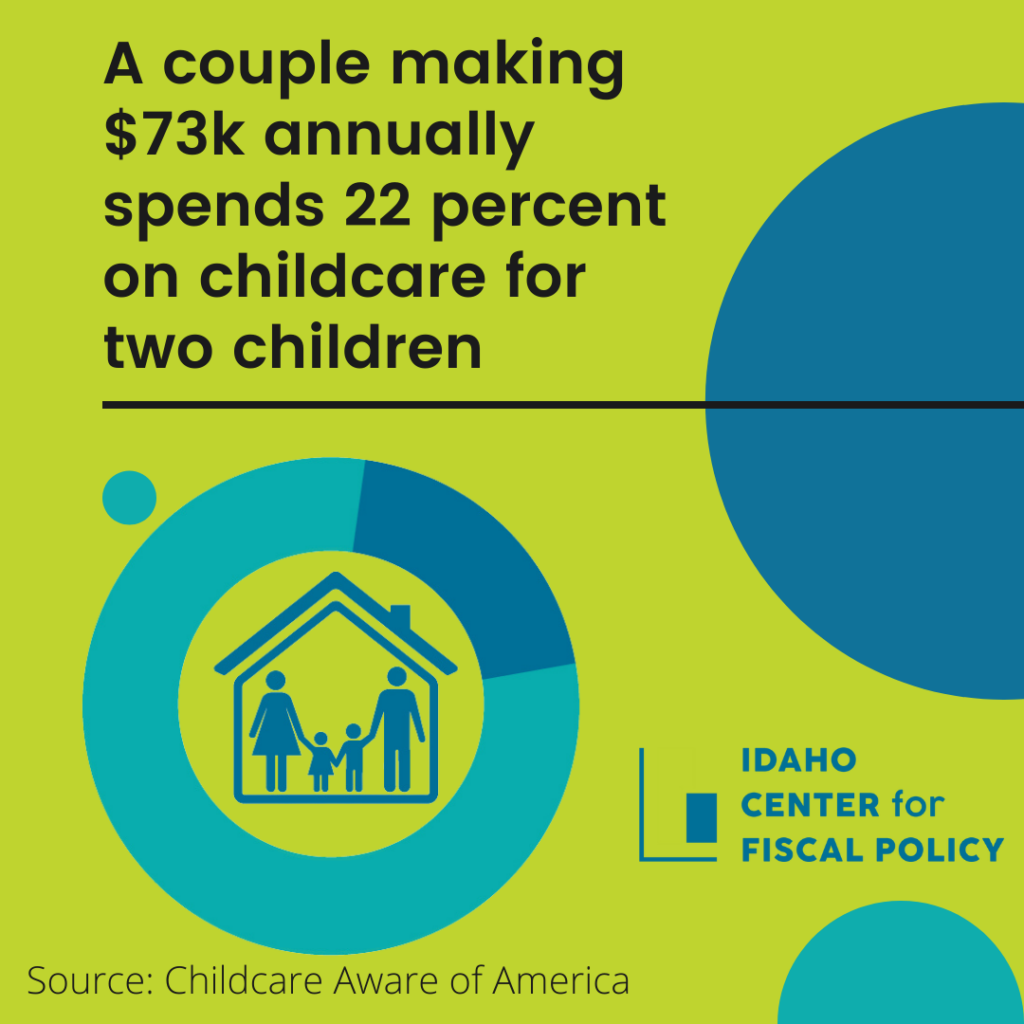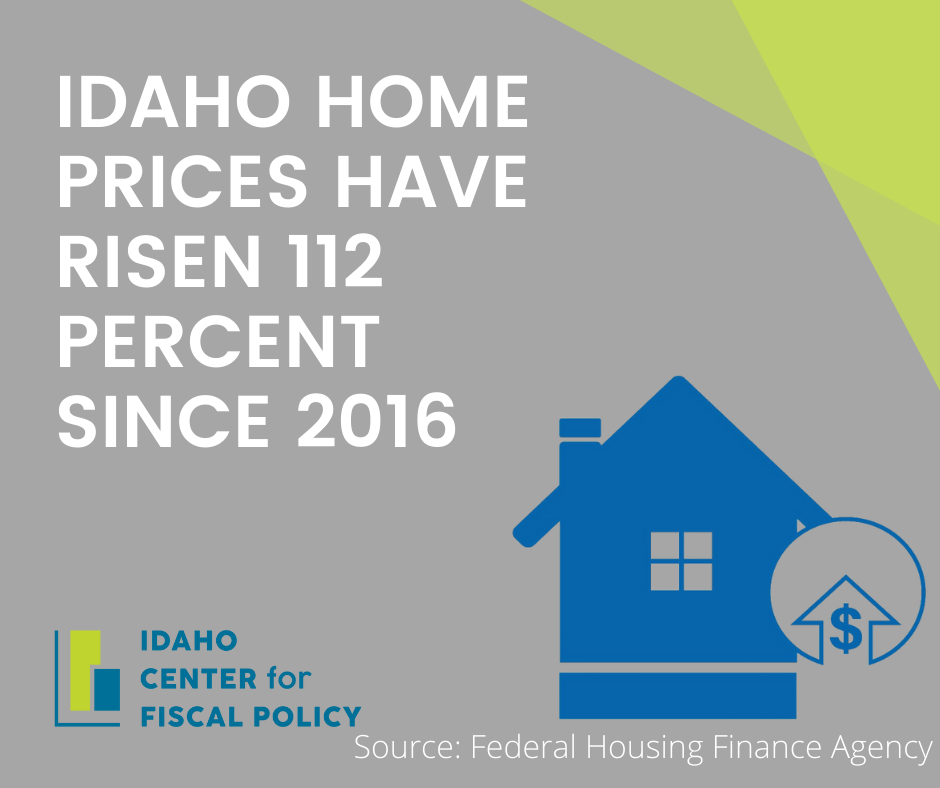Idaho is typically thought of as a relatively cheap place to live, at least before the COVID-19 pandemic. But the pandemic’s widespread economic impacts – from labor shortages to supply chain troubles – have also touched our state. Before the pandemic, Idaho was actually considered just middle of the pack when it came to cost of living, ranking 20th among all the states in 2019 in terms of cost of living according to CNBC’s annual America’s Top States for Business analysis. And that could be changing for the worse.
Pandemic-related effects on top of our state’s unique trends – such as a rapidly growing population – are increasing the cost of simply getting by in Idaho. Household budgets are feeling the pinch, from child care costs to gas prices to the cost of renting and owning a home. All are quickly becoming increasingly unaffordable for Idahoans with low- and moderate-incomes.
Idaho policymakers can help address these rising costs in the 2022 legislative session by enacting a working families tax credit. The credit would help offset the sales tax that working families pay, letting them use that offset to keep up with the rising costs they face. The credit would also support our economy as families would use it for goods and services at local businesses.
Childcare is Unaffordable and Unavailable for Many Families
Child care should cost no more than 7 percent of a family’s income.1 However, a family of two adults and two children at Idaho’s median income – about $73,000 per year – spends $16,301 for center-based care, which is about 22 percent of their income, as the graphic below shows.2

The high cost of child care can drive parents to take over full-time care of their children. This removes them from the paid labor market and is more likely to affect working women. It also contributes to Idaho’s falling labor force participation rate (a figure that measures the number of adults who are either employed or seeking employment as opposed to out of the labor market). Idaho’s labor force participation has shrunk by 1.5 percent compared with pre-pandemic levels and has been declining since October 2020.3 To address this, Gov. Brad Little pledged in October to spend coronavirus relief money on increasing day care capacity, which would help bring down the cost of child care. Policymakers should consider adding a working families tax credit as another policy response to the complex issue.
Getting to Work is Becoming More Expensive
The average cost of gas in Idaho is currently $3.72 per gallon, one of the highest rates in the nation.4 Nationally, the price of gasoline has gone up 43 percent since last year.5 A working families tax credit would help the Idahoans who need it most offset the increasing costs of traveling to work in a state without a robust public transportation system.
Housing Costs Are Rising More in Idaho Than in Any Other State
Idaho leads the nation in housing price increases, making purchasing a home increasingly unafforadable for middle-income families As the graphic below shows, housing prices have increased 112 percent since 2016 – and they’ve gone up by 37 percent in the last year alone.6

Renters are also feeling the squeeze, with average rents growing 31 percent from March 2020 to August, as the graphic below illustrates.7

Within housing policy options, policymakers should opt to fund Idaho’s state housing trust fund to help build up Idaho’s stock of affordable housing, as well as approve federal rental and homeowner assistance, options the center has covered. But we can do more to ensure Idahoans can cover rising costs now through family-friendly tax policies like the working family tax credit. To help draw Idahoans back to the labor market and cover the rising costs they face, Idaho policymakers need to make sure that work pays. A working families tax credit would encourage work and help keep lower- and middle-income families current with the rising cost of in Idaho.
- According to the U.S. Department of Health and Human Services, to be considered affordable, child care should not cost more than seven percent of a family’s income.
- Child Care Aware of America, data from survey collected in January 2021 by Child Care Resource and Referral. Idaho Center for Fiscal Policy Staff derived median income for a married couple based on Child Care Aware of America data.
- Idaho Department of Labor analysis, September, 2021.
- American Automobile Association, Idaho Average Gas Prices, Accessed on October 25, 2021, at: https://gasprices.aaa.com/?state=ID
- U.S. Bureau of Labor Statistics, Consumer Price Index Summary, September 14, 2021, Accessed at: https://www.bls.gov/news.release/cpi.nr0.htm.
- Federal Housing Finance Agency, Change in FHFA State House Price Indexes. Accessed on October 8, 2020, at: https://www.fhfa.gov/DataTools/Tools/Pages/House-Price-Index-(HPI).aspx Analysis includes home sales data from Q2 2020 to Q2 2021 & Q2 2016 to Q2 2021.
- Idaho Center for Fiscal Policy, accessed on October 22, 2021 at: Untapped Federal Relief Critical to Addressing Idaho Housing Issues – Idaho Center for Fiscal Policy (idahofiscal.org)


